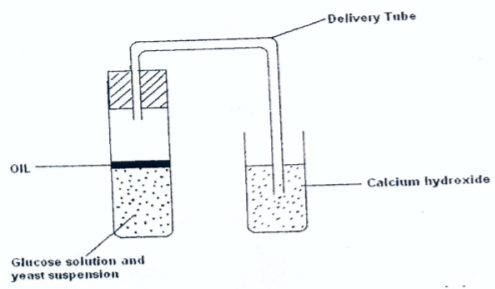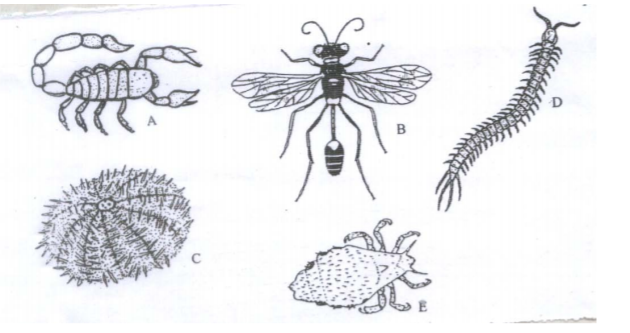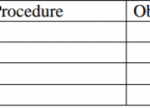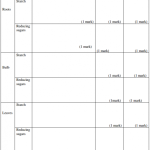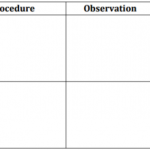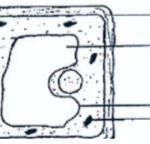KNEC Biology Paper 2 Question Paper / 2016 KCSE MOKASA Joint Examination
2016 KCSE MOKASA Joint Examination
Biology Paper 2
SECTION A (40 Marks)
Answer all the questions in this section.
Examine the diagram below carefully and use it to answer the questions that follow.
(a) Name the parts X, Y and Z. (3 marks)
(b) State the main substance which make-up the part labeled W. (1 mark)
(c) Name the process through which mineral salts move into the structure labeled X. (1 mark)
(d) Explain what happens to a red blood cell when placed in distilled water. (3 marks)
8 marks
(a) What is meant by natural selection? (4 marks)
(b) State four sources of evidences that support the theory of organic evolution. (4 marks)
8 marks
The diagram below shows a set up that was used to demonstrate a certain physiological process.
The glucose solution was boiled and oil added on top of it. The glucose solution was then allowed to
cool before adding yeast suspension.
(a) Identify the physiological process that was being investigated using the above set up. (1 mark)
(b) Why was glucose boiled during the experiment? (1 mark)
(c) What was the importance of cooling the glucose before adding the yeast suspension? (1 mark)
(d) What observation would be made in test tube at the end of the experiment? (1 mark)
(e) How would the observation made in (d) above be affected if oil was not added on top of the yeast
suspension during the experiment? (1 mark)
(f) In another investigation, a bird was found to use 10 litres of oxygen to give a respiratory quotient
of 0.7 during period of flight. Name the type of food that was being respired by the bird and
determine the amount of carbon (IV) oxide produced during the same flight.
Type of food :- (1 mark)
Volume of carbon (IV) oxide produced. (2 marks)
8 marks
Pure breed of red cows and pure breed of white bulls were crossed to give F1 calves which had a
mixture of red and white coat known as roan. The F1 were selfed.
(a) Using letter R to represent gene for red colour and W to represent gene for white colour work
out the phenotypic ratio of F2. (4 marks)
(b) Work out the genotypic ratio of a cross between F1 offspring and white bull. (3mks)
(c) Comment on the gene(s) controlling the colour of coats in cattle mentioned above. (1mk)
8 marks
You are provided with photographs of animals. Study the photographs and the dichotomous key
below to enable you identify the taxonomic group to which each animal belongs.
KEY
1. a) Jointed legs present ………………………………………………………………go to 2
b) Jointed legs absent………………………………………………………………..go to 7
2. a) Three pairs of legs ………………………………………………………………..go to 3
b) More than 3 pairs of legs………………………………………………………….go to 5
3. a) Wings present …………………………………………………………………….go to 4
b) Wings absent………………………………………………………………………Anoplura
4. a) One pair of wings…………………………………………………………………Diptera
b) Two pairs of wings……………………………………………………………Hymenoptera
5. a) Four pairs of legs ………………………………………………………………… Arachnida
b) More than ten pairs of legs ………………………………………………………. go to 6
6. a) One pair of legs in each body segment…………………………………………… Chilopoda
b) Two pairs of legs in each body segment ………………………………………… Diplopoda
7. a) Body partially enclosed in a shell………………………………………………… Mollusca
b) Body surface has spiny projection…………………………………………….Echinodermata
a) Using the key, identify the following organisms to their taxonomic groups. In each case, give the
sequence of steps which you followed in identifying them. (4 marks)
b) i) Using observable features only, state the class to which the animal labeled A and B on the
photographs above belong (2 marks)
State two observable features on B, that enabled you to arrive at that answer in (b (i) above.(2mks)
8 marks
SECTION B (40 Marks)
Answer question six (6) in the spaces provided (compulsory). Choose either question 7 or 8 and answer in the space provided after question 8.
During an ecological study of a lake, a group of students recorded the following observations.
(i) Planktonic crustaceans feed on planktonic algae;
(ii) Small fish feed on planktonic crustaceans, worms and insect larvae;
(iii) Worms feed on insect larvae;
(iv) A bird species feeds on small fish, planktonic crustaceans, worms and large fish;
(v) Insect larvae feed on planktonic algae;
(vi) Large fish feed on small fish.
(a) From this record of observations, construct a food web. (4 marks)
(b) From the food web, isolate and write down a food chain that ends with:-
(i) Bird species as a secondary consumer. (1 mark)
(ii) Large fish as a tertiary consumer. (1 mark)
(c) The biomass of the producers in the lake was found to be greater than that of primary consumers.
Explain this observation. (2 marks)
(d) Using the food web, identify three pairs of organisms that compete for food in the lake and for
each case, name the food being competed for. (6 marks)
(e) (i) State three ways by which human beings may interfere with this lake ecosystem. (3 marks)
(i) Explain how each of the ways stated in (e) (i) above may affect life in the lake. (3 marks)
20 marks
(a) Describe the digestion of a starchy meal along the human alimentary canal. (13 marks)
(b) Describe the process of urea formation. (7 marks)
……………………………………………………………………………………………………………
……………………………………………………………………………………………………………
……………………………………………………………………………………………………………
……………………………………………………………………………………………………………
……………………………………………………………………………………………………………
……………………………………………………………………………………………………………
……………………………………………………………………………………………………………
……………………………………………………………………………………………………………
……………………………………………………………………………………………………………
……………………………………………………………………………………………………………
……………………………………………………………………………………………………………
……………………………………………………………………………………………………………
……………………………………………………………………………………………………………
……………………………………………………………………………………………………………
……………………………………………………………………………………………………………
……………………………………………………………………………………………………………
……………………………………………………………………………………………………………
……………………………………………………………………………………………………………
……………………………………………………………………………………………………………
……………………………………………………………………………………………………………
……………………………………………………………………………………………………………
……………………………………………………………………………………………………………
……………………………………………………………………………………………………………
……………………………………………………………………………………………………………
……………………………………………………………………………………………………………
…………………………………………………………………………………………………………
20 marks
(a) Describe how gaseous exchange occurs in terrestrial plants. (13 marks)
(b) Describe the process of metamorphosis in a grasshopper. (7 marks)
……………………………………………………………………………………………………………
……………………………………………………………………………………………………………
……………………………………………………………………………………………………………
……………………………………………………………………………………………………………
……………………………………………………………………………………………………………
……………………………………………………………………………………………………………
……………………………………………………………………………………………………………
……………………………………………………………………………………………………………
……………………………………………………………………………………………………………
……………………………………………………………………………………………………………
……………………………………………………………………………………………………………
……………………………………………………………………………………………………………
……………………………………………………………………………………………………………
……………………………………………………………………………………………………………
……………………………………………………………………………………………………………
……………………………………………………………………………………………………………
……………………………………………………………………………………………………………
……………………………………………………………………………………………………………
……………………………………………………………………………………………………………
……………………………………………………………………………………………………………
……………………………………………………………………………………………………………
……………………………………………………………………………………………………………
……………………………………………………………………………………………………………
……………………………………………………………………………………………………………
……………………………………………………………………………………………………………
……………………………………………………………………………………………………………
20 marks

